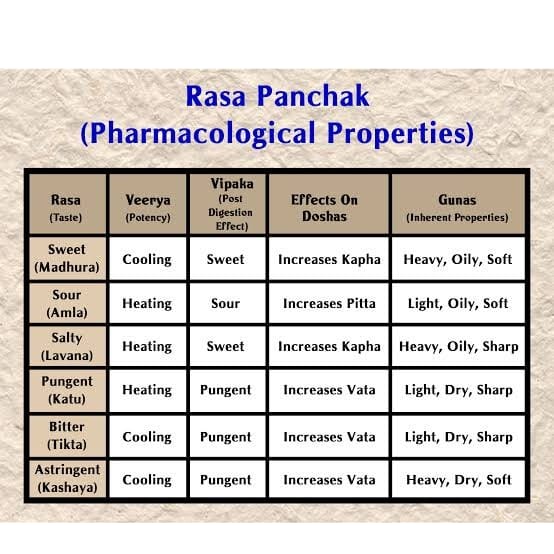Ancient Wisdom Meets Modern Science: Can Rasa Panchaka Decode Drug Action Better Than Western Pharmacology?
- Dr Rakesh VG
- Aug 7
- 3 min read
Updated: Aug 11
By Dr Rakesh Ayureshmi, Ayureshmi Ayurveda Wellness Centre, Kollam, Kerala, India
What if a 5,000-year-old pharmacological system held the keys to understanding drug behavior more precisely than many modern models? Ayurveda’s Rasa Panchaka—the fivefold framework used to classify medicinal substances—offers an elegant yet profound map of therapeutic action. In today’s pharmacodynamics-driven world, validating and translating these classical concepts could revolutionize how we discover and utilize medicines.
As chronic diseases, drug resistance, and individualized medicine challenges grow, Dravyaguna Shastra—Ayurveda’s materia medica—deserves renewed attention not as folklore, but as a science waiting to be reinterpreted through a modern lens.
Rasa Panchaka: The Fivefold Lens of Ayurvedic Pharmacology
Rasa Panchaka comprises:
1. Rasa (Taste)
2. Guna (Qualities)
3. Virya (Potency)
4. Vipaka (Post-digestive effect)
5. Prabhava (Unique effect)
These parameters are not just sensory or qualitative observations—they represent a holistic predictive model of how substances interact with the body, mind, and disease pathways.
In contrast, modern pharmacodynamics focuses on the interaction between a drug and its biological target, emphasizing receptor binding, enzyme activity, and signal transduction.
Mapping Rasa to Receptor Affinity:
Rasa (taste) is traditionally considered the first clue to a substance's action. Recent research supports that taste receptors exist throughout the body—not just on the tongue—including in the gut, lungs, brain, and even immune cells (Behrens & Meyerhof, Trends in Molecular Medicine, 2011). This aligns with the Ayurvedic claim that rasa influences tissue response and systemic activity.
For instance:
Tikta (bitter) rasa is known for detoxification. Modern science shows bitter compounds stimulate phase I and II liver detox enzymes and possess anti-inflammatory and anti-cancer properties (Wang et al., Molecules, 2019).
Madhura (sweet) rasa is nourishing, anabolic, and calming. Today, we see how saccharide-like structures influence insulin, serotonin, and even endorphin pathways.
Thus, rasa may predict receptor behavior, metabolic routes, and emotional outcomes—making it a functional pharmacophore.
Virya & Vipaka: Potency and Transformation Beyond the Gut
Virya (hot or cold potency) maps onto modern ideas of metabolic stimulation or inhibition. Ushna virya (hot potency) herbs like Pippali (Piper longum) increase bioavailability—confirmed by studies showing piperine enhances the absorption of curcumin, resveratrol, and other nutrients (Shoba et al., Planta Medica, 1998).
Vipaka, the post-digestive effect, resonates with pharmacokinetics: how a substance is absorbed, metabolized, and its systemic outcome. For instance:
Katu vipaka (pungent post-digestive effect) enhances metabolism, correlating with thermogenic and lipolytic actions seen in capsaicin-rich plants.
Madhura vipaka (sweet post-digestive effect) builds ojas, akin to prolonged anabolic effects—possibly tied to hormonal modulation.
These offer predictive insights not just for digestion but systemic effects like hormonal balance, neurotransmitter activity, and immunomodulation.
Guna & Prabhava: Qualities and Quantum Effects
Guna, the qualitative attribute (e.g., light/heavy, oily/dry), influences how a substance interacts with bodily tissues. In pharmacology, this parallels lipophilicity, molecular weight, and bio-distribution.
Modern drug design uses QSAR (Quantitative Structure-Activity Relationships), a system not dissimilar to guna-based prediction of tissue affinity and biological function.
Then comes Prabhava—a unique, sometimes inexplicable effect. In modern terms, this could correspond to allosteric modulation, epigenetic changes, or quantum pharmacology. An herb like Brahmi (Bacopa monnieri) enhances cognition, despite lacking known cholinergic activity—it may operate via prabhava-like mechanisms, involving subtle neuronal plasticity and gene modulation (Morgan & Stevens, Evidence-Based Complementary and Alternative Medicine, 2010).
Bridging Ayurvedic Dravyaguna & Modern Pharmacodynamics
Translating Rasa Panchaka into empirical models can guide:
Drug discovery: Predictive profiling of herbs based on rasa, virya, and vipaka can fast-track phytochemical screening.
Personalized medicine: Aligning prakriti (individual constitution) with dravya profiles supports precision therapeutics, akin to pharmacogenomics.
Safety and efficacy: Ayurvedic classification anticipates side-effects, synergism, and antidotal properties—rare in reductionist drug models.
Clinical trials integrating both systems have begun. For instance:
Ashwagandha’s rasayana and madhura vipaka profile correlates with anxiolytic and adaptogenic effects seen in RCTs (Chandrasekhar et al., Indian Journal of Psychological Medicine, 2012).
Triphala’s tridoshic balancing and antioxidant guna matches its anti-inflammatory, anti-obesity, and chemoprotective effects confirmed in animal and human studies (Peterson et al., Journal of Alternative and Complementary Medicine, 2017).
Conclusion: Ayurveda’s Rasa Panchaka Is a Forgotten Blueprint for the Future
Ayurveda does not simply list herb properties—it offers a dynamic pharmacological algorithm woven into the fabric of nature, body, and consciousness. Rasa Panchaka is not poetic metaphor but a predictive model that, when integrated with modern pharmacodynamics, could redefine drug research, safety, and personalized care.
In a world seeking safer, more holistic medicines, the wisdom of Dravyaguna Shastra—re-examined with scientific tools—may provide the synthesis humanity needs.
Let us not just validate Ayurveda through science—but also evolve science through Ayurveda.
Can taste predict drug action?
Discover how Ayurveda’s Rasa Panchaka is revolutionizing modern pharmacology.
It’s time we reimagine medicine—not just as chemicals, but as conscious tools of healing.





Comments